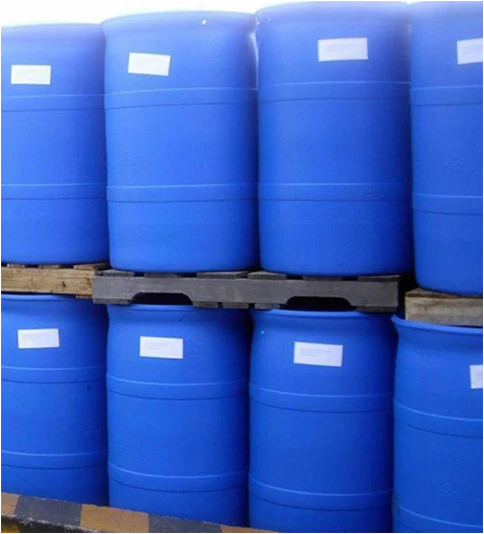
Jul . 20, 2024 12:20 Back to list
Understanding the Molecular Weight of Glacial Acetic Acid for Chemical Applications and Research
Glacial Acetic Acid Understanding Its Molecular Weight and Significance
Glacial acetic acid is a chemical compound with the molecular formula C₂H₄O₂. It is a colorless liquid organic compound that is commonly known for its strong odor and acidic properties. The term glacial refers to its state at room temperature, where it can solidify into ice-like crystals due to its high purity and freezing point of approximately 16.6°C (61.9°F). Understanding the molecular weight of glacial acetic acid and its implications is essential in various scientific and industrial applications.
The molecular weight of glacial acetic acid is approximately 60.05 g/mol. This value is derived from the sum of the atomic weights of its constituent atoms two carbon (C) atoms, four hydrogen (H) atoms, and two oxygen (O) atoms. The approximate atomic weights of carbon, hydrogen, and oxygen are 12.01 g/mol, 1.008 g/mol, and 16.00 g/mol, respectively. By doing the calculations, the molecular weight can be confirmed as follows
- Carbon 2 x 12.01 g/mol = 24.02 g/mol - Hydrogen 4 x 1.008 g/mol = 4.032 g/mol - Oxygen 2 x 16.00 g/mol = 32.00 g/mol
Adding these gives us a total molecular weight of 60.05 g/mol for glacial acetic acid.
glacial acetic acid molecular weight

The significance of this molecular weight extends beyond mere calculations. In laboratories, the molecular weight is crucial for stoichiometric calculations involving chemical reactions, where precise measurements are necessary for achieving desired outcomes. When preparing solutions, knowing the molecular weight allows chemists to determine how much of the compound to use, especially in reactions or processes that require specific concentrations.
Glacial acetic acid has a multitude of applications across various fields. In the food industry, it is commonly used as a preservative and flavoring agent, often referred to in its diluted form as vinegar. Its potent acidity acts as a preservative, inhibiting the growth of bacteria, molds, and yeasts, thus prolonging the shelf life of food products.
Additionally, its role in the production of various chemical substances cannot be overstated. Glacial acetic acid serves as a precursor to numerous chemicals, including acetates, which are widely used in the production of plastics, synthetic fibers, and paints. Moreover, acetic acid is involved in the manufacture of cleaning agents and solvents, showcasing its versatility in industrial applications.
However, handling glacial acetic acid requires caution due to its corrosive nature. Direct contact can cause severe burns, and inhaling its vapors can lead to respiratory issues. Hence, safety protocols must be followed in both laboratory and industrial settings to minimize risks.
In conclusion, glacial acetic acid is a significant compound with a molecular weight of approximately 60.05 g/mol, making it a vital substance in numerous applications in chemistry and industry. Its usefulness ranges from food preservation to industrial manufacturing, underscoring the importance of understanding its properties, including its molecular weight. By grasping these concepts, scientists and industry professionals can safely and effectively harness the utility of this remarkable compound in their respective fields.
-
SmartAgri Solutions - Precision Farming&Soil Monitoring
NewsJul.13,2025
-
Industrial Solutions-Example Inc.|Smart Manufacturing&Energy Efficiency
NewsJul.13,2025
-
Food Grade Glacial Acetic Acid-Pure Quality|High-Purity Acetic Acid,Food-Grade Chemical
NewsJul.13,2025
-
Industrial Efficiency Solutions-NextGen Technologies|Advanced Automation&Data-Driven Analytics
NewsJul.12,2025
-
Smart Manufacturing Solutions-Example.com|Enhance Efficiency&Reduce Costs
NewsJul.12,2025
-
Food grade glacial acetic acid
NewsMar.07,2025
